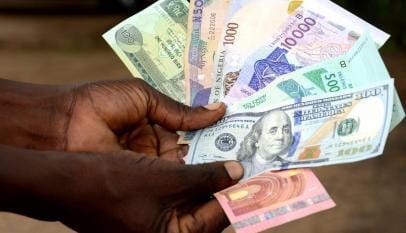In Summary
- The depreciation of African currencies has significantly increased the cost of debt repayment, worsening national financial crises.
- Countries like São Tomé & Príncipe and Sierra Leone face extreme currency depreciation, while others like Nigeria and Uganda struggle with forex shortages and inflationary pressures
- Some economies are experiencing the worst exchange rate fluctuations in history, affecting trade and investment.
Deep Dive!!!
Currency devaluation has become a pressing concern for several African nations, impacting trade, inflation, and economic stability. The depreciation of local currencies against the US dollar has created challenges for businesses and individuals alike, making imports more expensive while reducing the value of savings. Due to inflation, political instability, or external market influences, some African nations are witnessing their currencies weaken at an alarming rate. Here, we explore the ten African nations with the most significant currency devaluation, revealing the economic realities behind the numbers.
10. Rwanda
The Rwandan Franc currently stands at 1,438.7 per US dollar. Rwanda has experienced significant currency depreciation due to rising inflation and trade imbalances. Despite efforts to stabilize the economy, increasing fuel and food import costs have put pressure on the Franc. The central bank has implemented monetary tightening, but external shocks continue to weaken the currency.
9. Nigeria
Nigeria’s Naira has seen sharp declines, now trading at 1,528.4 per US dollar. The country has faced persistent forex shortages, worsened by dwindling oil revenues. Government policies, including multiple exchange rates and capital controls, have failed to prevent further depreciation. The recent removal of fuel subsidies has also contributed to inflation, putting additional strain on the currency.
8. Malawi
The Malawian Kwacha trades at 1,733.2 per US dollar, with inflation hitting double digits. Malawi’s heavy reliance on agricultural exports and foreign aid leaves it vulnerable to external shocks. The government recently devalued the Kwacha to meet International Monetary Fund (IMF) requirements, aiming to boost foreign investment but also increase the cost of imports.
7. Tanzania
The Tanzanian Shilling, valued at 2,650 per US dollar, has steadily depreciated due to trade deficits and external debt burdens. Tourism and agriculture remain key economic drivers, but rising global commodity prices have impacted foreign exchange reserves. The central bank’s interventions have provided temporary relief, but long-term stability remains uncertain.
6. Democratic Republic of the Congo (DRC)
The Congolese Franc trades at 2,865.2 per US dollar, suffering from chronic instability. The country’s reliance on mineral exports, such as cobalt and copper, makes it highly susceptible to global price fluctuations. Political uncertainty and corruption have also weakened investor confidence, further devaluing the currency.
5. Burundi
The Burundian Franc, now at 2,962.7 per US dollar, has seen continuous depreciation due to economic mismanagement and trade deficits. Sanctions and limited access to international financial markets have exacerbated the crisis. Inflation remains high, and the lack of foreign investment further weakens the currency.
4. Uganda
The Ugandan Shilling, valued at 3,665.4 per US dollar, has faced devaluation pressures from external debt and fluctuating export revenues. While Uganda’s economy benefits from oil exploration and a growing services sector, the Shilling remains volatile due to global financial conditions and rising inflation.
3. Guinea
The Guinean Franc trades at 8,643.8 per US dollar, one of the weakest in Africa. The country’s currency crisis stems from high inflation, political instability, and limited forex reserves. Guinea’s dependence on mining, particularly bauxite, makes its economy vulnerable to global market swings.
2. Sierra Leone
The Sierra Leonean Leone has fallen drastically, now trading at 20,969.5 per US dollar. The country’s economic struggles are fueled by weak exports, poor governance, and high inflation. In 2022, a redenomination attempt aimed to simplify transactions, but it failed to stabilize the currency, leading to further devaluation.
1. São Tomé & Príncipe
The Dobra, now valued at 22,281.8 per US dollar, has the most severe devaluation in Africa. São Tomé & Príncipe’s tiny economy relies heavily on foreign aid, tourism, and cocoa exports. The lack of diversification and persistent trade imbalances have left the currency highly unstable, making it difficult for businesses and citizens to plan long-term financial decisions.

